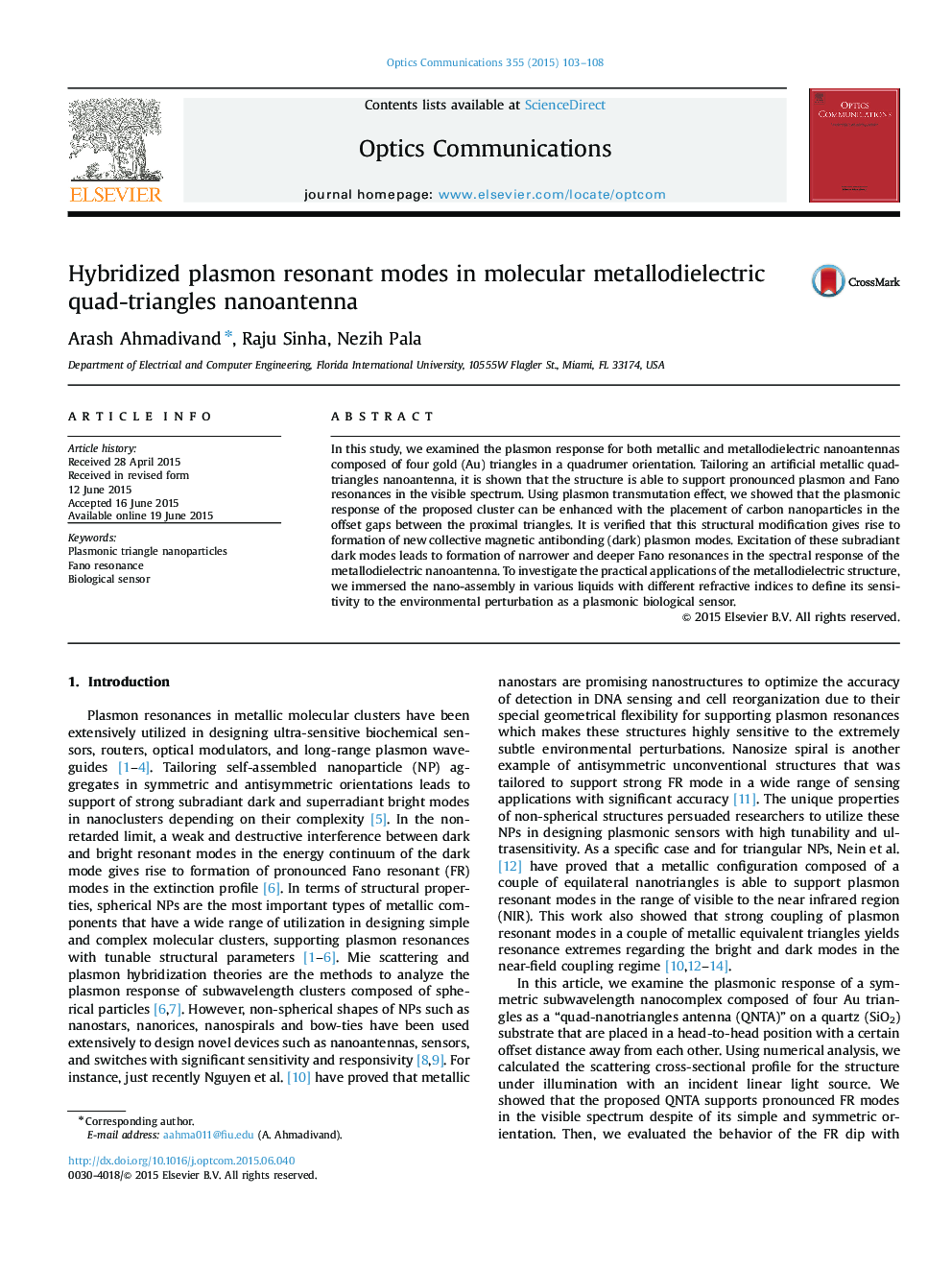| Article ID | Journal | Published Year | Pages | File Type |
|---|---|---|---|---|
| 1533546 | Optics Communications | 2015 | 6 Pages |
•Investigation of plasmon resonance hybridization in a metallic quad-triangles nanoassembly.•Inducing Fano resonant mode in a simple molecular cluster consists of four nanotriangles.•Fano minimum is enhanced by adding dielectric nanoparticles to the metallic structure.•The sensing accuracy of the metallodielectric nanoantenna is defined numerically.
In this study, we examined the plasmon response for both metallic and metallodielectric nanoantennas composed of four gold (Au) triangles in a quadrumer orientation. Tailoring an artificial metallic quad-triangles nanoantenna, it is shown that the structure is able to support pronounced plasmon and Fano resonances in the visible spectrum. Using plasmon transmutation effect, we showed that the plasmonic response of the proposed cluster can be enhanced with the placement of carbon nanoparticles in the offset gaps between the proximal triangles. It is verified that this structural modification gives rise to formation of new collective magnetic antibonding (dark) plasmon modes. Excitation of these subradiant dark modes leads to formation of narrower and deeper Fano resonances in the spectral response of the metallodielectric nanoantenna. To investigate the practical applications of the metallodielectric structure, we immersed the nano-assembly in various liquids with different refractive indices to define its sensitivity to the environmental perturbation as a plasmonic biological sensor.
